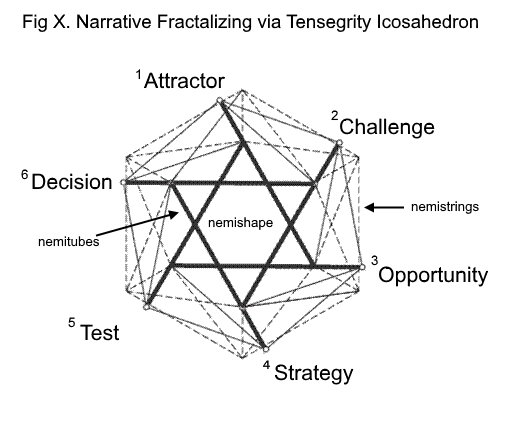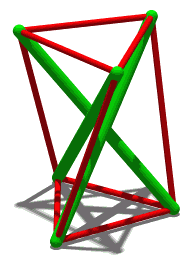Nemetic code as a possible Pattern 4.0 Language.
nP - situation of interest .
nP indicates a "NEME" in the nemetic code. NEME is an observable and therefore measurable quanta of information or energy. There are three flavors of Nemes: A Physical Neme, coded as physNeme or pNP. A cognitive Neme coded as cNP. An emotional NEME, coded as eNp. The non human world can be described with cNp. It is the human world that includes the emoNeme ( eNp ) and the cogNeme ( cNp ). The presence of emotion and cognition is the reason human problems are always wicked. It is impossible to predict how someone will respond to a change in the environment. Every change in the environment sensitively affects how another person will respond. It is similarly impossible to predict how the other person responds. A "wicked problem" is unavoidable.
Glossary
nX indicates an exchange of nemes.
The sender's message only has value if someone responds to that message. thus exchanges.
nSt indicates nString a pattern of nemetic exchanges.
Our facebook thread is a perfect example of persistent exchanges.
nTu indicates nTube the entwining of nStrings.
There have been many exchanges between the participants at the thread. Each one person to one person exchanges form a string. An nTu emerges when two nSt start to overlap. Over time more nSt are created with more people exchanging. Once an nTu starts to form it takes the friction out of Exchange. As the friction is removed Intent emerges. Once common Intent forms, a project can begin.
nPlx indicates nemPlexity which maps to pockets of Complexity. It is essentially the same as an "assemblage."
As the number of nTu increase an nPlx emerges. The nPlx is the space in which individual parts in a nStr can be combined to create a new Neme. The new Neme can result in a feedback loop. The more Nemes emitted, the more nStrings will emerge, the more NTubes will form the more nPlx will emerge the more Nemes will be emitted.
Notation
Let @ indicate that one nPlx ( nemiPlex) is nested inside another.
That allows us to say
nP @nPlx1 @nPlx2 @nPlx3 @nPlx4 @nPlx5. . .@ nPlxn.
A power function indicates the presence of a Complex Adaptive System
nSt = ( Summation of nP1 ...nPn ) a
nTu = ( Summation of nSt 1...n )b
nPlx = ( Summation of nTu1. . .n)c
Visualization of a nPlx.

By Bob Burkhardt [CC BY 2.5 (http://creativecommons.org/licenses/by/2.5)], via Wikimedia Commons



Comments (2)
Michael J said
at 7:19 am on Jan 24, 2016
cNp describe "Cognitive presence is defined as “the extent to which the participants in any particular configu-ration of a community of inquiry are able to construct meaning through sustained communi-cation” (Garrison et al, 2001, p. 89). Cognitive presence is the manifestation of learners’pathways towards higher-order thinking."
eNp describe Social presence is defined as “the ability of participants in a community of inquiry to projectthemselves socially and emotionally, as ‘real’ people (ie, their full personality), through themedium of communication being used” (Garrison et al, 2000, p. 94). They maintain that socialpresence contributes to enhancing and sustaining cognitive presence.
nTu describes "Presence"
http://onlinelibrary.wiley.com/doi/10.1111/bjet.12302/epdf
Michael J said
at 7:24 am on Jan 24, 2016
nTu = ( Summation of nSt 1...n )b defines the dynamic for "social presenceshould be divided into two constructs, namely social presence, or “the degree of ‘realness’ of the other in the communication,” and social space, described as the “degree to which social interper-sonal relationships are salient” (Kreijns et al, 2014, p. 5)"
You don't have permission to comment on this page.